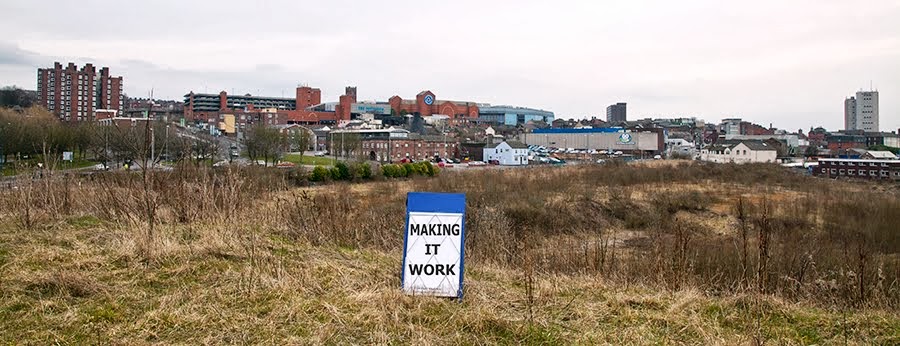Helen Jenkins,
Facilitator – Go and See trip to Sheffield 7 January 2014
The first week back to work after the Christmas holidays can
be a real drag. All that time
overindulging on food, family and friends is swapped for the hard reality of
work plans and the daily commute.
Usually I find it hard to get myself motivated at this time of
year. But this year was different – my first
day back at work was spent sharing knowledge and information with some of the
most generous people and organisations possible; and it has made me vow to make
sure that I share as much as I can this year with others too.
A big part of my role as facilitator for Making it Work was
organising a ‘Go and See’ trip. The
purpose of ‘Go and See’ was to get together with organisations who could both challenge
our thinking about fundraising and income generation for the arts and also to
share knowledge and experience. Finding a
model of funding which works is a massive challenge for arts organisations in
Stoke-on-Trent, and we knew we were not alone in this. We wanted to visit a
city or region where the challenges we face would be understood and crucially
where we may be able to find some solutions.
We choose to visit Sheffield after much debate and
thought. We wanted to visit somewhere of
a similar size to Stoke-on-Trent, where there was thriving cultural industry
and scene which had been born out of industrial decline. We wanted to learn how the arts had thrived
and what lessons we could take back to our own organisations and also to the
region. Quite a tall order!
We choose Sheffield and on 7th January a minibus
set off from The Barracks en route across the hills to Sheffield, a beautiful but
bumpy journey. We had a packed schedule
for the day and planned to meet our counterparts in a variety of organisations
ranging from National Portfolio Funded galleries with vast experience of income
generation to brand new organisations who had never embarked on any fundraising
before. We met with:
·
Site Gallery
·
Yorkshire Artspace
·
Bloc Projects
·
Access Space
·
Sheffield Printmakers
·
Music In the Round
It is hard to sum up the learning, as it was wide and
varied. For myself, the visit reinforced
that every size of organisation is having to look at all of their income streams
and then decide where and how to focus its resources to maximise income. What
was clear was that many of the traditional sources of income, for example trusts
and foundations, are being used more and more by arts organisations and I
wonder how long this can be sustained.
It was fascinating to hear that some groups have decided to steer clear
of Arts Council funding, citing stiff competition and the fact that the funding
is largely restricted to projects as their reason.
Without exception there was huge generosity of spirit, time
and knowledge from all of the people we met with in Sheffield. We found issues similar to our own but also
great spirit and will. Of course we did
not find the solution to our funding need, but then again we did not expect to,
but we have made contacts that I hope will remain and grow.
Thank you to everyone we met – it was a fascinating and interesting
day. Please do come and make the journey
to Stoke to see us soon!

